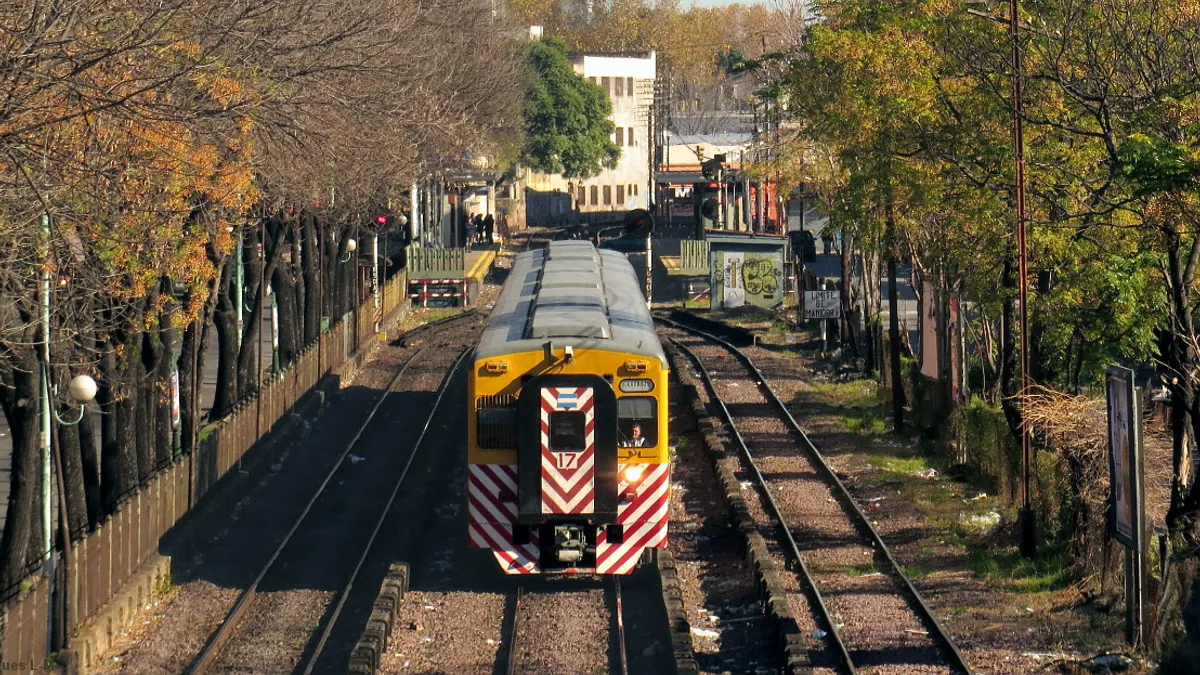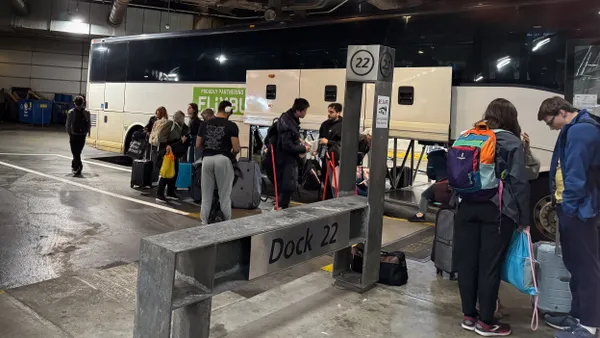Dive Brief:
- Google has released a list of the world's most crowded transit lines, based on reports from Google Maps users during peak commuting hours from October 2018 through June 2019.
- New York's "L" train is the only entry from a U.S. city to make the top 10. The full list includes:
- Urquiza Line: Buenos Aires, Argentina
- Line 11 (Coral): Sao Palo, Brazil
- Line A: Buenos Aires
- Linha 8 Diamante: Sao Palo
- Line 13: Paris, France
- Line C: Buenos Aires
- Chuo Line: Tokyo, Japan
- Line 9 (Emerald): Sao Palo
- Nippori-Toneri Liner: Tokyo
- L train: New York City
- In many U.S. cities, buses are the most crowded transit lines. Boston, Chicago, Los Angeles, Minneapolis, Pittsburgh and San Francisco are among the cities where bus lines top the transit congestion list, according to Google.
Dive Insight:
The crowdedness list showcases two new features Google added to its Maps application in more than 200 global cities last week to give users greater visibility into their transit rides. One feature shows live traffic delays for buses, displaying where the delay is and how late the bus will be. The other feature provides transit crowdedness predictions so users can get a sense for how crowded their train, bus or subway car will be, based on past rides.
Crowding is a widespread transit passenger complaint and at times it can deter people from using transit. Transit agencies are working to reduce system crowding — especially during peak rush times — in a number of ways, including adding touchless fare payment systems to speed customers passing through turnstiles and prevent back-ups.
Inside a transit vehicle, passengers are captive for the duration of their trip and don't necessarily have the option to leave a crush of people. But with information from predictive technologies such as the new Google Maps features, passengers have the ability to avoid a crowded vehicle before getting in. They might choose to avoid overly crowded modes of transportation altogether, or simply wait an extra few minutes for a less crowded train or bus.
Transit agencies can benefit from these features as well. They could identify trains that are consistently crowded and at what times, which could lead to more efficient and targeted solutions.












